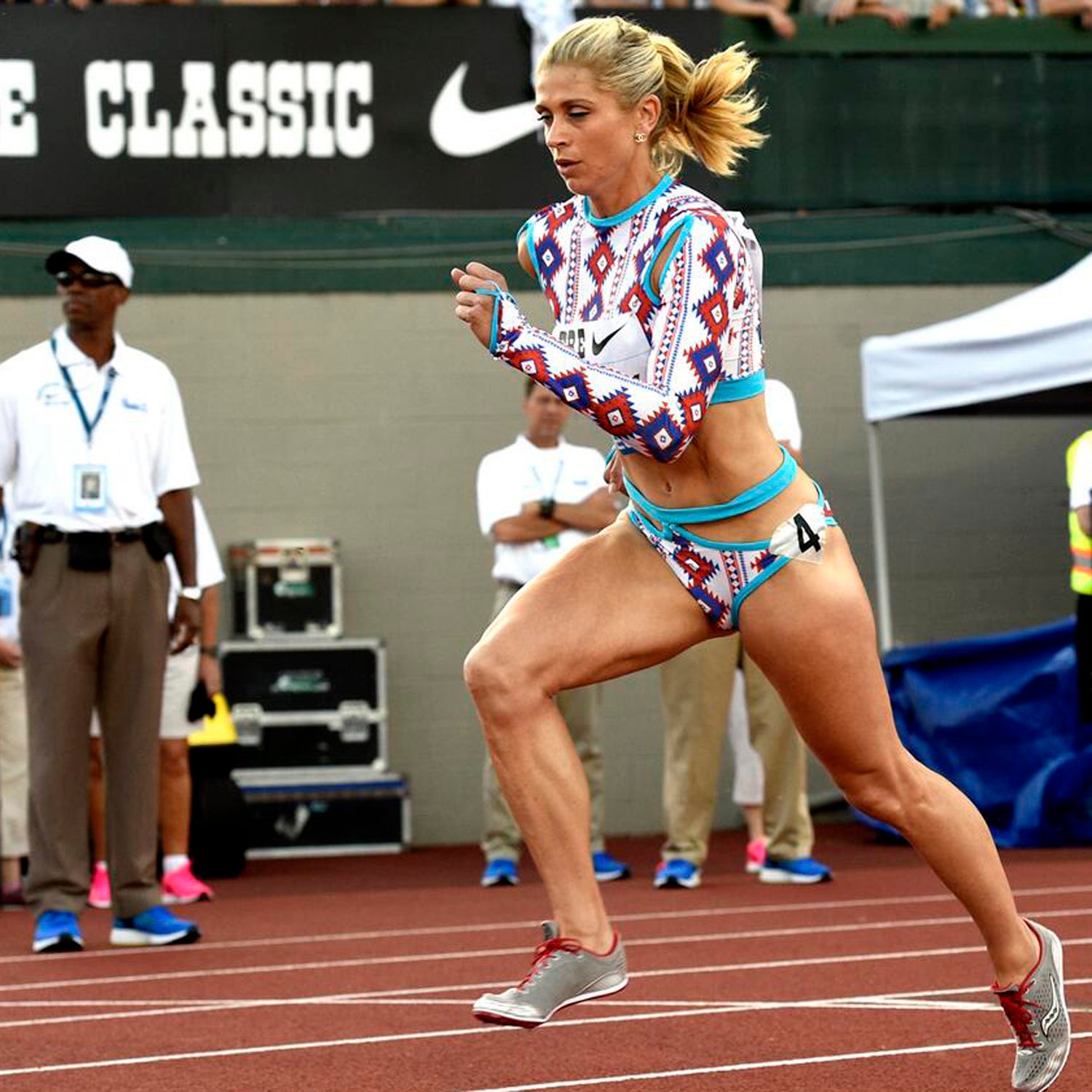Runner Maggie Vessey knows how to turn heads. At last week’s Prefontaine Classic track meet in Oregon, the 32-year-old nabbed silver in the 800-meter event, then promptly garnered more press for her designer duds than her impressive kick.
In a sea of muted running outfits, Vessey rocked a kit as “a bright Navajo-inspired print with long sleeves on top, and a skimpy, strappy bottom. And she sported Chanel earrings.” The move garnered a lot of attention and made us wonder if we could expect to see more exciting fashion choices on the red carpet—er, track.
Sadly, says elite runner , the answer is probably not. Strict clothing regulations enforced by both national and international track and field governing bodies (USATF and IAAF) is the main reason. Athletes and their sponsors must comply with those policies, which include rules about coloring, and logo size and placement. (Check out showing the difficulties sponsors face in getting USATF approval for their designs.)
The rules have in the past few years for restricting athletes’ sponsorship opportunities. And while the rules despite athletes’ , there is a loophole: unsponsored athletes can wear pretty much whatever they want.
Vessey isn’t the first athlete to take advantage of that fact. As the Eugene Register-Guard reported in 1999, high jumper “competed in the Millrose Games wearing an Anne Klein-designed strapless two-piece fur outfit.” More recently, 3,000-meter steeplechaser Alexi Pappas wearing a homemade singlet with polka-dot stripes, and a Spiderman top. Aric Van Halen ran the 3,000-meter steeplechase at this year’s in a jersey featuring the torso-sized face of the Mona Lisa.
Of course, the costumes aren’t just for fun. The media coverage they get can help attract sponsors. Acuff signed with Asics, while Pappas signed with the Nike Oregon Track Club. Vessey, a former New Balance athlete, will likely attract new sponsors as well. Should she sign, the fashion show would effectively come to an end.
But there’s another reason we shouldn’t expect to see more outrageous clothes on the track that has nothing to do with regulations.
Fleshman brings up that looked into how clothes affect self-perception. In the study, people were given a coat, then asked to take a test. When they were told the coat belonged to a doctor, they performed significantly better on the test than when they believed the coat belonged to a painter.
“That’s part of the reason why there are certain things that keep repeating in athletic uniforms,” Fleshman says. “Someone like me who grew up watching the pros—I watched X who looked like X and wore X. So that’s what I associate with being world class. I think it’s difficult to evolve fashion too much without feeling like you’re sacrificing performance.”


